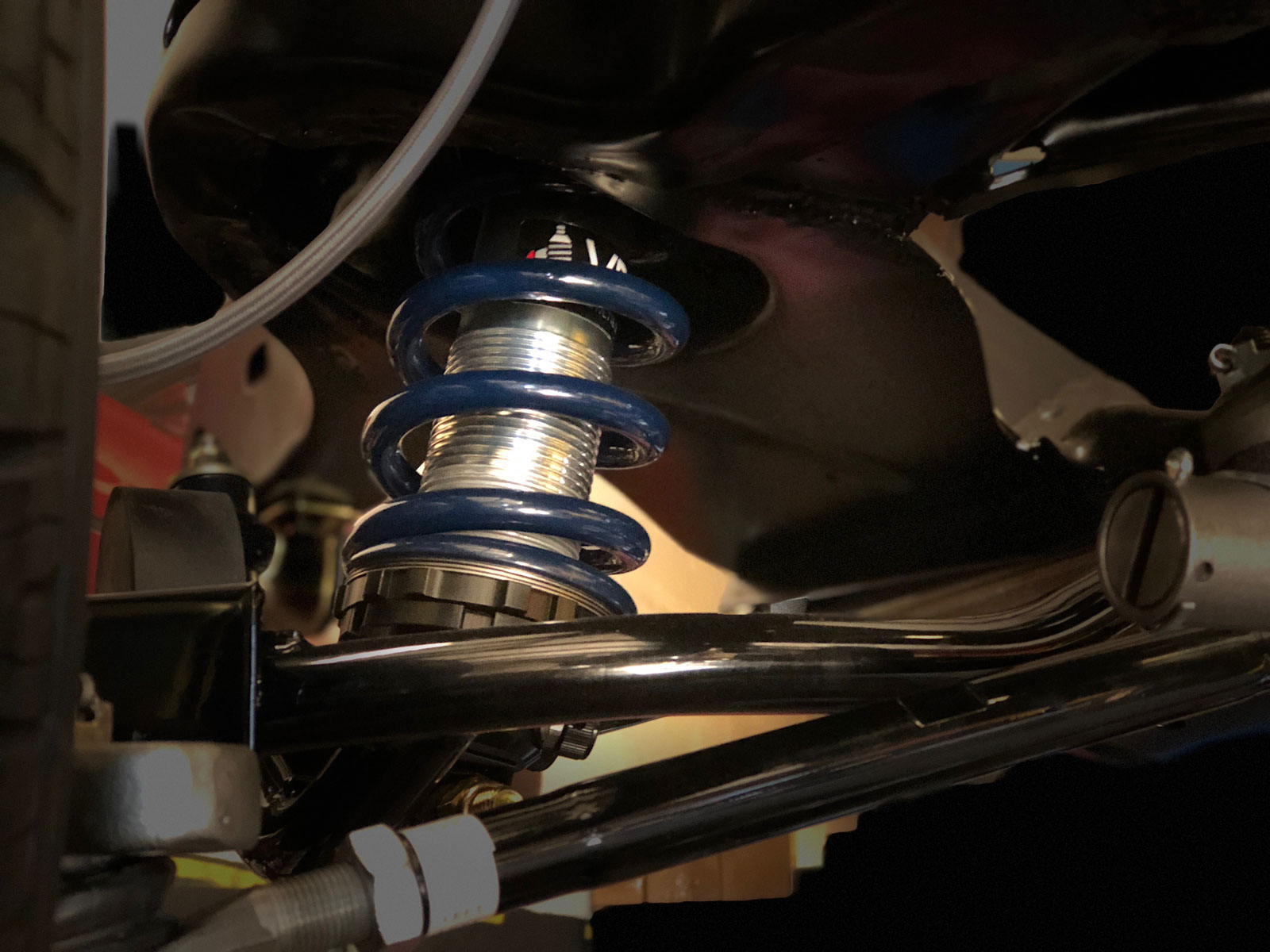
Adjustable Shocks – QA-1
Adjustable shocks, single vs double, what do they each do for my Corvette?

Single Adjustable: These shocks are great for 1963-1982 Corvettes driven on the street only. You adjust compression and rebound at the same time making setup and initial adjustment easy. They are not meant for any kind of track duty. For 84-92 Corvettes, you can get by with single adjustable, but you do not get the best out of the ride or handling. We do not offer singles for 97 or newer Corvettes.

Double Adjustable: These shocks adjust compression and rebound independently allowing you to fine tune your suspension for ride or handling. For autocross or track, doubles are a must! These are the preferred shocks for 84-96 Corvettes and required for all 97 and newer Corvettes using adjustable shocks.
So we now know what they are and kind of what they do, but how do you know how to set them up? For single adjustable shocks, you generally want more clicks up front and less in the rear. This compensates for the weight of the motor, plus allows for more weight transfer in the rear allowing for a bettering riding and handling car. If you find the car oversteers, do one of either; first add 1-2 clicks to the front, if that doesn’t help, then reduce rear clicks. If you find the car understeers, reduce the front by 1-2 clicks, or add 1-2 in the rear. Only make one adjustment at a time before test driving the car again.
For double adjustable shocks the rule of thumb is more compression up front and more rebound in the rear. Too much front rebound will make the car ride rough and bounce through the corners, too much compression in the rear will cause the car to oversteer or have reduced traction on launch. Loosely, you can look at compression as handling, and rebound as ride quality, although they certainly intertwine with each other. For fine tuning, you’ll adjust front compression for under or oversteer. Reduce compression for understeer and add compression for oversteer. If you have having wheel hop or reduced rear traction, reduce rear compression. While under hard braking the rear of the car feels loose, add rear rebound to keep the rear from hiking up too quickly. Front rebound adjustments will only be for better weight transfer to the rear of the car under hard acceleration or if the car is riding too rough. The rear rebound can also me lessened when the car ride quality is too severe.
Basic shock settings by generation, single adjustable:
63-82: Front: 7 Clicks / Rear: 5 Clicks
84-96: Front: 7 Clicks / Rear: 5 Clicks
97+: N/A
Basic shock settings by generation, double adjustable:
63-82:
Street: Front: C8/R5 / Rear: C5/R8
Track: Front: C10/R5 / Rear: C4/R8
Drag: Front: C12/R3 / Rear: C3/R10
84-96:
Street: Front: C7/R4 / Rear: C3/R6
Track: Front: C10/R5 / Rear: C4/R11
97-13 Base:
Street: Front: C7/R4 / Rear: C3/R6
Track: Front: C10/R5 / Rear: C4/R11
97-13 ZO6/GS/ZR1
Street: Front: C9/R4 / Rear: C4/R7
Track: Front: C12/R5 / Rear: C5/R11
Van Steel exclusively uses QA1 shocks for their reliability, rebuildability, quality, and they look good too.

